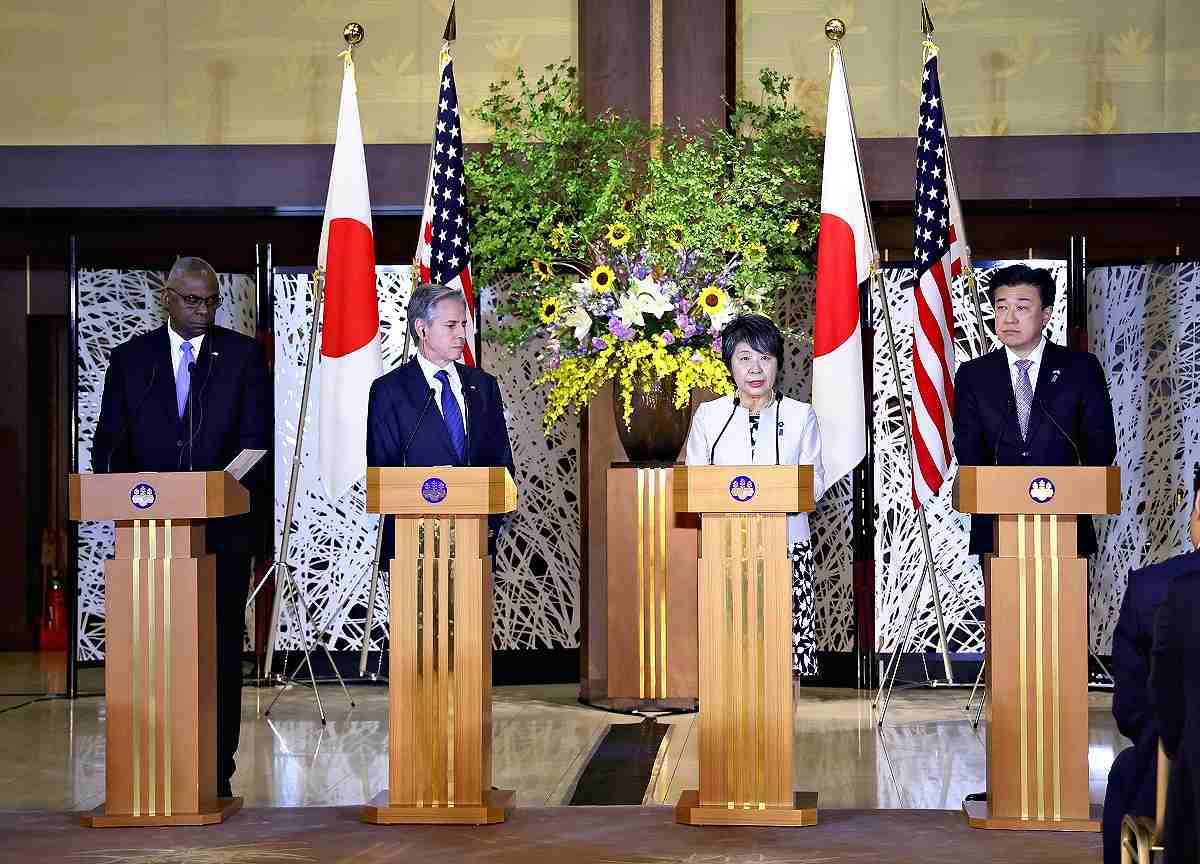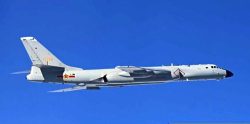Japan, U.S. Plan Joint HQ for U.S. Forces in Japan to Boost Cooperation Between U.S. Military, Self-Defense Forces

From left: U.S. Defense Secretary Lloyd Austin, U.S. Secretary of State Antony Blinken, Foreign Minister Yoko Kamikawa and Defense Minister Minoru Kihara hold a joint press conference in Tokyo on Sunday.
7:00 JST, July 29, 2024
Japan and the United States agreed to set up a joint force headquarters of the U.S. Army, Navy, Air Force and Marine Corps stationed in Japan, during two-plus-two defense talks attended by the defense and foreign ministers of the two governments in Tokyo on Sunday.
The main theme of the talks, also known as the Security Consultative Committee, was reviewing the framework of command and control of the Self-Defense Forces and the U.S. armed forces stationed in Japan, to strengthen cooperation between the two sides. The joint force headquarters will have a certain level of authority to coordinate operations and exercises, which is expected to deepen cooperation between the SDF and U.S. armed forces in Japan.
The Japanese and U.S. governments also held a bilateral dialogue on extended deterrence, which includes the use of nuclear deterrence, in Tokyo on Sunday. It was the first ministerial-level meeting of the bilateral discussions on extended deterrence, and the two countries confirmed the unwavering U.S. policy to defend Japan militarily, including through its nuclear capabilities.
In a joint announcement, the two governments confirmed that both countries will continue to explore how best to reinforce extended deterrence.
The Japanese and the U.S. governments have regularly discussed extended deterrence at working-level meetings since 2010. According to Japanese government sources, Japan and the United States plan to issue a joint statement on extended deterrence based on the results of past dialogue. It will likely include the views of both governments so the deterrence will be fully effective.
Specifically, the statement will likely include the United States’ commitment to contribute to deterrence in areas around Japan through such means as its nuclear power. It is expected to outline the capabilities that the United States will provide from peacetime to contingency, including what circumstances facing Japan would spur the United States to retaliate against third-party countries.
"Politics" POPULAR ARTICLE
-

Japan to Support Central Asian Logistics Route That Bypasses Russia, Plan to Be Part of Upcoming Summit in Tokyo
-

Japan to Tighten Screening of Foreigners’ Residential Status by Providing Information of Nonpayment of Taxes
-

Takaichi Cabinet Approval Holds at 72% as Voters Back Aggressive Fiscal Stimulus, Child Benefits
-

Chinese, Russian Bombers Flew Unusual Path by Heading Toward Tokyo; Move Likely Meant to Intimidate Japan
-

Takaichi Meets Many World Leaders at G20 Debut in Johannesburg; Speaks with Heads of Countries Including Italy, U.K., Germany, India
JN ACCESS RANKING
-

Keidanren Chairman Yoshinobu Tsutsui Visits Kashiwazaki-Kariwa Nuclear Power Plant; Inspects New Emergency Safety System
-

Imports of Rare Earths from China Facing Delays, May Be Caused by Deterioration of Japan-China Relations
-

University of Tokyo Professor Discusses Japanese Economic Security in Interview Ahead of Forum
-

Japan Pulls out of Vietnam Nuclear Project, Complicating Hanoi’s Power Plans
-

Govt Aims to Expand NISA Program Lineup, Abolish Age Restriction
























